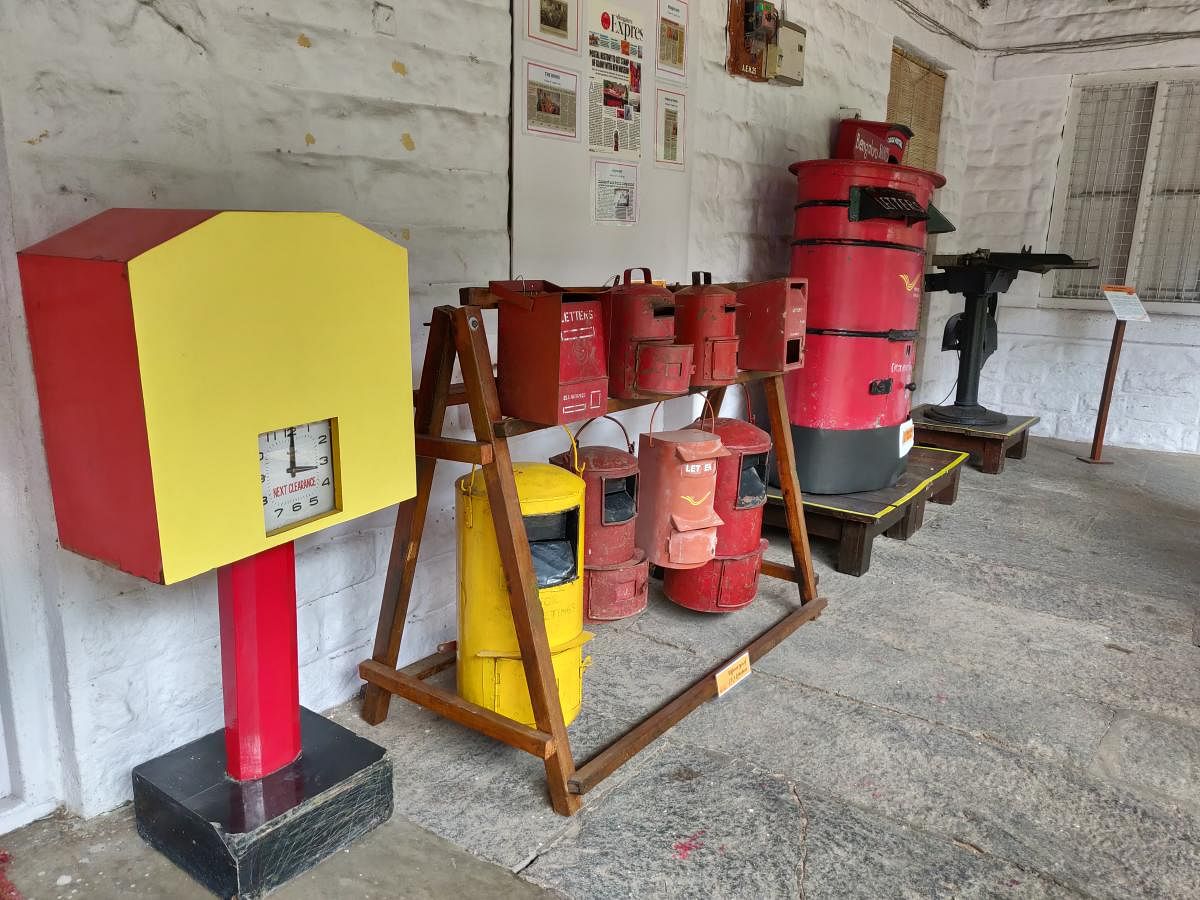Remember the good old days when one would wait for the postman to bring letters, money orders and cards from your loved ones?
A museum that opened in August 2019, Sandesh or the Museum of Communication, housed within a 19th-century vintage bungalow, hopes to takes you down that memory lane. It’s on Museum Road, Bengaluru.
With brick tiled sloping roofs, high ceilings and pillars, the museum building is a perfect prelude to the timeless treasures housed inside. Inside, the museum has been divided into six rooms based on things related to communication — like stamps, information boards, postal machines, telephone instrument and uniforms.
Titled Sandesh, the first room presents an exhaustive collection of stamps that were released in India from the pre-Independence days. Stamps to commemorate significant events and to celebrate freedom fighters right from 1857 are on display.
There are more as an ode to Indian art, architecture, culture and heritage.
A section in Sandesh is dedicated to the Mysore Anche, which was an indigenous method of communication devised by the Mysore maharajahs from 1701 to 1889. ‘Anche’, which translates into local post in Kannada, consisted of peons, runners, gumastas and duffedars, and was used to deliver ordinary posts, registered posts and parcels effectively before it merged with the imperial post office in 1889.
A journey through time
The next room, Samparka, takes us back in time and showcases machinery and equipment used in post offices then. This includes petromax lamps, telephone instrument, weighing scales, typewriters and stencil machines. The olive-green postal uniform, complete with a staff and spear, is a display to take note of.
It serves as a reminder of a postman’s job as indeed dangerous due to encounters with wildlife. Post-men and runners would often walk for miles in extreme conditions. Counting machines, seals, seal pads and fake-note detectors have also been displayed.
The third room, Samputa, consists of account books, sorting bags, leather bags and ledgers maintained by the post-office staff.
Samvahana has the ancient V-SAT (Very Small Aperture Terminal) machine used for money transfers once.
Sanghathi, the fifth room, displays the evolution of postal uniform — belts, bags and raincoats included. The ‘Unclaimed Objects’ section is worth a
The last and sixth room, Sangraha, has a large collection of stamps mounted on frames as well as special covers issued on special occasions. There is also a section for seasoned and budding philatelists that has a postage stamp viewer as well as a signoscope.
Beyond this room, a collection of kinds of letterboxes, as well as motorbikes and cycles used by postmen, are on display. It is interesting to note that postmen and women were granted a monthly cycle allowance while motorcycles were used as a ‘speed post’ vehicle.
The museum has been set up with an objective to engage school children and youth in philately as it’s an engaging and educative activity.
Special activities stamp identification, spot quizzes and print your own stamp. are organised for school-goers.
There is also an insightful audio-visual film that showcases the history of stamps and posts in India.
